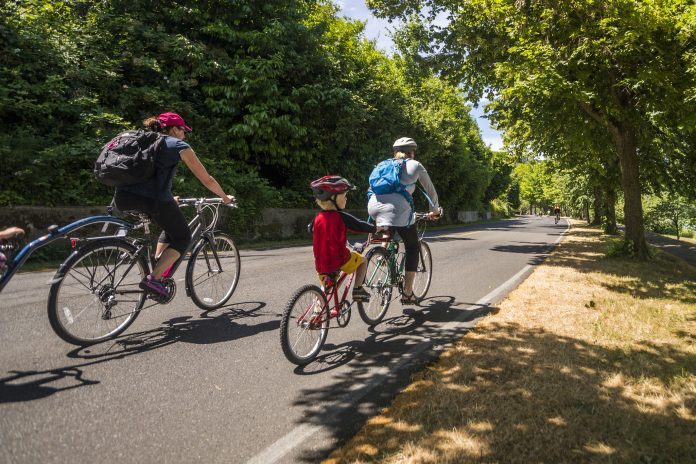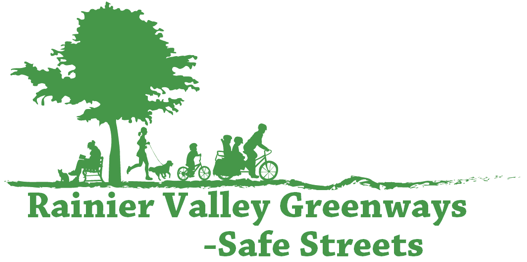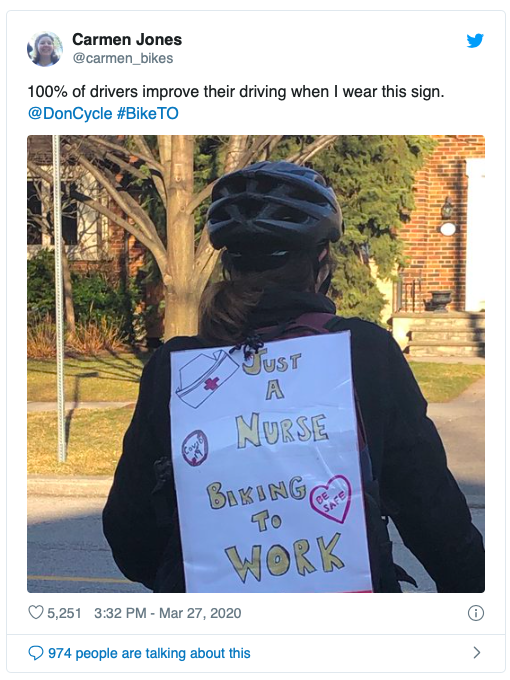
Last week Rainier Valley Greenways and Safe Streets (RVGSS) submitted a letter to the Seattle City Council and Mayor Jenny Durkan requesting that the City open a segment of Lake Washington Boulevard to pedestrians and cyclists for the duration of the COVID-19 stay-at-home order. RVGSS also called for the City to implement traffic calming measures on Rainier Avenue South, the highest collision corridor in the city, citing the need to do more to prevent crashes during a time in which medical care and supplies may be overstretched due to the pandemic.
The stay-at-home order includes allowances for essential errands and daily outdoor exercise so long as people maintain social distancing while out in their neighborhoods. You may have already noticed it’s actually pretty tricky to maintain the mandated six feet of separation when sharing Seattle’s sidewalks with other pedestrians–which is often due to skimpy sidewalk widths and cluttered sidewalk designs.
Outside of certain arterial streets with RapidRide bus routes in Downtown, the minimum width for a sidewalk in Seattle is six feet. While the additional width that comes with space allotted to the building frontage and furniture/landscape zones that abut sidewalks can sometimes offer up more space, as the visual below demonstrates, those areas are not guaranteed to be clear of obstacles. Sidewalks are designed for pedestrians to travel in close proximity to each other, especially when passing.

Closing Lake Washington Boulevard to motorized traffic would be an expansion of the City’s existing Bicycle Sunday parkway program which opens Lake Washington Boulevard for cycling or walking from Mount Baker Beach to Seward Park on certain weekend dates between May and September. In the letter, RVGSS writes that the move would “provide people with much needed space to enjoy and stay healthy while maintaining social distancing.”

Concerns about crowded streets have led to cities like New York announcing pilot programs to pedestrianize streets during the COVID-19 epidemic. While neighborhoods in Seattle are significantly less dense than in New York, Seattleites are still taking to the streets on foot during the stay-at-home order leading to some potential crowding issues on sidewalks and streets. Since social distancing appears to be slowing down the spread of the disease in Washington state, officials have begun rolling out enforcement of social distancing measures and even created a portal in which suspected violations by businesses and individuals can be reported.
For many hunkered down Seattleites, the opportunity to unglue themselves from a screen and get outside to enjoy exercise in the fresh air is precious during this time. This is especially true for people who live in small apartments, who live alone, or perhaps most of all, for adults and kids struggling to coexist peacefully in confined spaces as the weeks wear on.
Outdoor exercise is also a great way to maintain health and even boost your immune system. That’s why a group of nearly 50 UK physicians and researchers wrote an open letter urging the British government not to adopt strict bans on outdoor activity that have been implemented in France, Spain, and Italy. The panel also pushed for the UK government to go a step further by implementing additional measures to ensure streets are safe for walking and biking during the epidemic.
How can we make our streets safer?
In the United States as well a movement aimed at increasing safety for pedestrians and cyclists appears to be on the rise. The National Association of City Transportation Officials (NACTO) recently published an evolving toolkit of 22 emergency response strategies, highlighting the increased need to “protect road users and keep the world moving during the COVID-19 epidemic.”
Some examples of recommended strategies from NACTO include policies that the have already been implemented in Seattle such as establishing backdoor boarding and waiving fares on transit and classifying bike shops as essential services. So far, however, Seattle has yet to make a move on building pop-up bike lanes to complete the gaps in the existing network.

As noted by Eli Sanders in the The Stranger cities like Philadelphia are heeding the call to increase safe biking infrastructure during the pandemic to provide people with additional opportunities for healthy recreation and transportation. Philadelphia city officials decided to permanently close a portion of Martin Luther King Jr. Drive to motorized traffic in response to a petition from the Bicycle Coalition of Greater Philadelphia (BCGP), which had found that cyclist data counts conducted by the Delaware Valley Regional Planning Commission were up by 151% since the beginning of the COVID-19 epidemic and had even risen as much as 471% on Kelly Drive Trail, which follows the Schuykill River bisecting a large swathe of the center city.

And Philadelphia advocates are not stopping with one win. In an article for WHYY, Philadelphia’s PBS and NPR station, Randy LoBasso and Ashley Vogel of BCGP call for the city to “immediately begin work on pre-planned and legislated protected bike lanes and convert all high-trafficked existing curbside bike lanes into pop-up protected bike lanes.” After the early success with Martin Luther King Jr. Drive, it will be interesting to see if a city that not long ago had only five miles of protected bike lanes will continue developing safe infrastructure for biking.
Closer to home, in addition sharing guidelines for how to bike responsibly during the COVID-19 epidemic, Tom Fucoloro of the Seattle Bike Blog has offered up a very comprehensive list of ideas opening up streets for cyclists and pedestrians during the COVID-19 pandemic. Anyone who is interested in this topic definitely should check out his list for themselves. On top of RVGSS’s request to open Lake Washington Boulevard to pedestrians and cyclists, Fucoloro also suggests that Alki Avenue Southwest in West Seattle, which has been used successfully as the location of Summer Streets, and Interlaken Drive in Capitol Hill, which was originally designed by Olmstead brothers as a bicycle boulevard, could be put to better use for the community by going “car-free.”
“It’s like dropping a new park into the neighborhood, and this one has a path wide enough to maintain at least six feet at all times,” writes Fucoloro, noting that because these streets have been opened to pedestrians and cyclists in the past, it would not require dedicating a lot of resources to accomplish these changes now.
So what are we waiting for?
Natalie Bicknell Argerious (she/her) is a reporter and podcast host at The Urbanist. She previously served as managing editor. A passionate urban explorer since childhood, she loves learning how to make cities more inclusive, vibrant, and environmentally resilient. You can often find her wandering around Seattle's Central District and Capitol Hill with her dogs and cat. Email her at natalie [at] theurbanist [dot] org.

